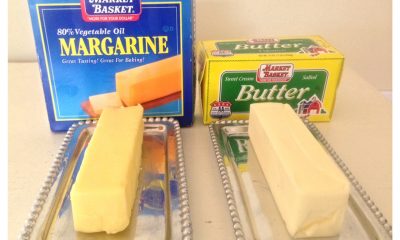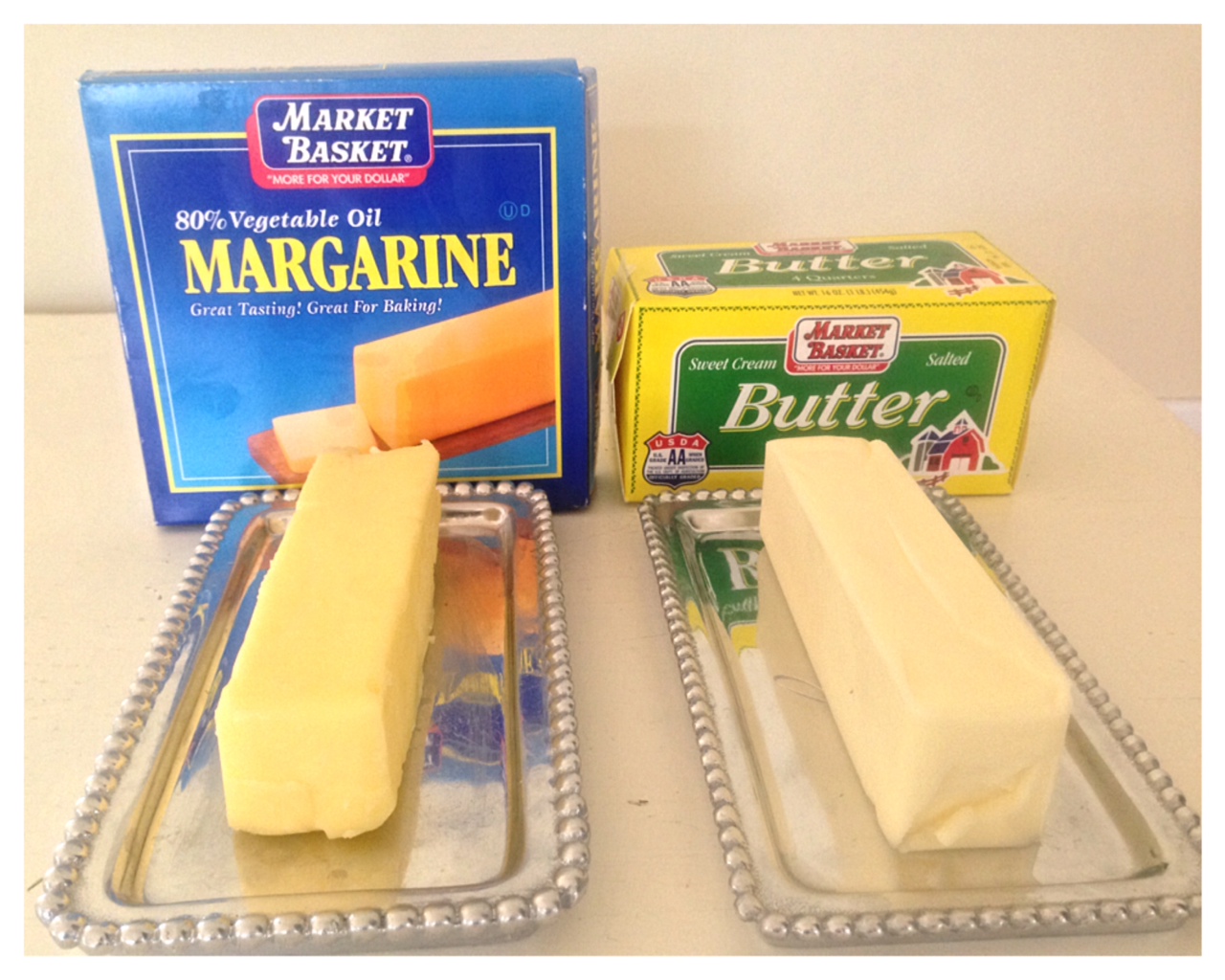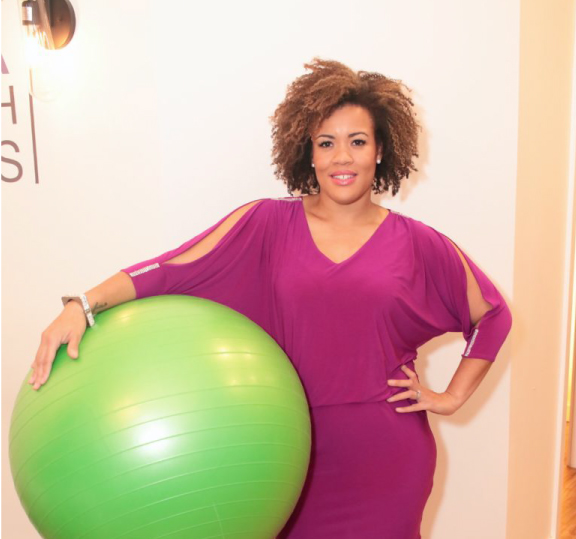Health & Fitness
Are Your Shoes Ruining Your Life?
Published
5 years agoon

I have a cousin who I tease because she refused to get rid of a pair of New Balances she owned since her early high school years (she’s 30 and she just recently got rid of them). I lovingly nicknamed the shoes her Old Faithfuls. The shoes earned this nickname because not only were they in it for the long haul but because she wore them to anything that required movement. Hiking, dancing, moving from one apartment to the next, you could guarantee she’d be wearing her Old Faithfuls.
I personally think it’s awesome that she could find such a pair of shoes that could make it through hell and high water. In fact, I envy her because none of my shoes have my back (or in this case feet) like her Old Faithfuls had hers.
It was safe to say that this pair of shoes was in her top five, and although they were dependable, they weren’t necessarily good for her or the activities she chose to participate in. I always found myself questioning when she would consider finally letting go, even more so when I realized how the shoes could potentially ruin her workouts, activities, and even her health.
It’s not always the old worn-out shoes that pose problems for active lifestyles. Some of the most recent designs, including the popular knits, have been known to put a damper on certain types of exercises. So it’s extremely important to know when to replace a pair of shoes, but equally as important to choose the right shoe for your workout.
Different shoe designs support our feet differently and what may work for one person may not work for the next. What we may not realize is that there is a ton of technology that goes into building sneakers and wearing shoes that aren’t appropriate for our specific workouts could cause harm.
For example, if you’re participating in a class or sport that requires a great deal of lateral and agility movements, you want a shoe that supports it. If you’re doing high impact movement and jumping, you want a shoe with shock absorption. Low impact exercises (weight lifting) wouldn’t require the same type of shoe as the former and may have to be replaced less frequently.
There are certain signs to pay attention to when it comes to replacing shoes. How’s the tread looking? Examine this just as you would your tires. Is it more worn in certain spots? Are you starting to feel abnormal pains in your back, ankles, legs, hips, or feet? Feeling any friction or blisters starting to form? How often are you wearing this pair? Do you also wear this pair daily and to run errands?
Beyond all of this, one important key is to make sure you are not only picking a shoe suitable for your specific workout, but you are picking shoes in the right size with adequate cushioning, shock absorption and arch support.
By picking a shoe that is too small or too large, you’re pretty much asking for an injury. Even lacing them too tight or too loose can pose a threat. You put yourself at risk of stress fractures, shin splints, ankle pain, tendonitis, bunions, and damaged toenails. You may know your shoe size, but some styles run smaller or larger, so don’t skip the fitting, keeping in mind that our feet may swell throughout the day.
With so many athletic brands and designs out there, it may take some research and a few trips to the mall, but your perfect shoe is out there! Remember to check in and replace them as necessary and to choose functionality over style every time!
You may like
-


All Sugar Is Not Made Equally: Here’s The Deal With Refined Sugar
-


The Best Lip Gloss for Darker Skin
-


Margarine vs. Butter: Which is Healthier?
-


Nurse Alice: When Your Help isn’t Wanted with Suicide Prevention
-


Millennial Owns Fitness Franchise, Invents New Stretching Technique
-


The No-Cook Meal Plan: How To Stay Prepared When You Can’t Meal Prep
Health & Fitness
All Sugar Is Not Made Equally: Here’s The Deal With Refined Sugar
Published
5 years agoon
March 5, 2019
 Sugar, that sweet, crystalline white carbohydrate that is essential to our bodies regular function, but also highly detrimental to our health if consumed in excess or in its refined state. In normal energy production processes, the human body uses carbohydrates, sugars, and starches, to fuel normal metabolic processes on a cellular level. However, intake of highly processed and refined sugars has been linked to increased risk of developing adverse health conditions. Refined sugar usually comes from sugar cane or sugar beets that are processed into a form known as sucrose, a combination of glucose and fructose.
Sugar, that sweet, crystalline white carbohydrate that is essential to our bodies regular function, but also highly detrimental to our health if consumed in excess or in its refined state. In normal energy production processes, the human body uses carbohydrates, sugars, and starches, to fuel normal metabolic processes on a cellular level. However, intake of highly processed and refined sugars has been linked to increased risk of developing adverse health conditions. Refined sugar usually comes from sugar cane or sugar beets that are processed into a form known as sucrose, a combination of glucose and fructose.
Refined sugars are often used as sweeteners and are added to virtually all packaged food. Excess sugar is also linked to chronic inflammation and indirectly to certain cancer types due to weight gain and obesity.
Are all sugars bad? All sugar is not bad, in fact, every cell in our body relies on blood sugar (glucose) for normal function. However, refined and processed sugars and other carbohydrates can cause an abnormal spike in blood sugar levels.
This spike in blood sugar forces insulin hormones to work harder to distribute this excess glucose to the cells of the body, eventually resulting in insulin insensitivity or type 2 diabetes.
What are Refined Sugars?
These refined sugars are associated with unhealthy levels of fat in the blood. This excess fat in the blood, in the form of triglycerides and “bad” cholesterol (LDL) can increase the risk of developing heart disease and other health deficits.
Major Risks Associated With Refined Sugars
Consumption of refined sugars have been linked to conditions such as higher blood pressure, inflammation, fatty liver, and diabetes to name a few. Studies have shown that the increased calories from sugar cause an increase in fat in the body. This excess fat not only affects our appearance, but also our internal organs such as heart, liver and even brain.
Sugar-Based Diet
On the average American’s diet, the majority of sugar we consume comes from beverages such as juices, sodas, and sports or energy drinks. Other frequent sources of sugar consumption include dairy products, cookies/cakes, and most processed foods.
Even consumer goods you would not think contained sugar often do, such as soup, bread and even meats. Additionally, because sugar products are added to everyday consumer goods to increase shelf life, the majority of Americans consume over 80 grams (almost 20 teaspoons) of sugar daily on average. Those additional 80 grams daily amounts to an extra 66 pounds of weight yearly.
What to Avoid
Paying attention to product labels can help you to avoid products with added sugar. Common added refined sugars include: corn sweetener, corn syrup, high fructose corn syrup, juice concentrates and sugar molecules that end in “ose” such as dextrose, fructose, glucose, lactose, maltose, and sucrose.
How Much Is Too Much
While there is no recommended dietary allowance (RDA) for sugar set by The Institute of Medicine, the American Heart Association recommends less than 36 grams (9 teaspoons) of sugar daily. That translates to only consuming as much sugar that is contained in a 12 ounce can of soda daily.


A massive amount of nutrition misinformation exists on the internet.
Some of it is based on poor research or incomplete evidence, while other information may simply be outdated.
The professionals themselves may even tell you things that seem to directly contradict something you read the other day.
A good example of a subject no one seems to agree upon are the health effects of butter and margarine.
This article compares the two, looking at both sides of the debate.
What Are Butter and Margarine?
Butter is a traditional dietary staple made by churning cream.
It’s mainly used as a frying fat, spread or component of sauces, cakes and pastries.
As a concentrated source of milk fat, it’s mostly composed of saturated fat.
Because of studies associating a high intake of saturated fat with an increased risk of heart disease, public health authorities started recommending that people limit their consumption of butter in the 1970s.
Margarine is a processed food that is designed to taste and look similar to butter. It is often recommended as a heart-healthy replacement.
Modern types of margarine are made from vegetable oils, which contain polyunsaturated fats that can lower the “bad” LDL cholesterol when used instead of saturated fat.
Since vegetable oils are liquid at room temperature, food scientists change their chemical structure to make them solid like butter.
For the past few decades, a process known as hydrogenation has been used to harden the vegetable oils in margarine.
Hydrogenation increases the oil’s saturated fat content, but unhealthy trans fats are formed as a side product (1).
A more recent process called interesterification achieves similar results without forming any trans fats (2).
In addition to hydrogenated or interesterified vegetable oils, modern margarine may contain several food additives, including emulsifiers and colorants.
Put simply, modern margarine is a highly processed food product made from vegetable oils, while butter is basically concentrated dairy fat.
SUMMARYButter is a dairy product made by churning cream. Conversely, margarine is a product designed to imitate butter. While butter is mainly composed of dairy fat, margarine is typically produced from vegetable oils.
Butter may contain several nutrients not found in many other foods.
For example, butter from grass-fed cows may provide some vitamin K2, which has been associated with improved bone health (3, 4).
In fact, butter from grass-fed cows appears to be a better source of many nutrients than butter from cows fed grains.
Grass-Fed Butter is Nutritious
The health effects of butter largely depend on the diet of the cows it came from.
Cows eat grass in their natural environment, but in many countries, their menu is largely based on grain-based feeds.
Butter from grass-fed cows is much more nutritious. It contains more:
- Vitamin K2: This little known vitamin may help prevent many serious diseases, including cancer, osteoporosis and heart disease (5, 6, 7).
- Conjugated Linoleic Acid (CLA): Studies suggest that this fatty acid can have anti-cancer properties and help lower your body fat percentage (8, 9, 10).
- Butyrate: A short-chain fatty acid found in butter that’s also produced by bacteria in the intestine. It can fight inflammation, improve digestive health and may help prevent weight gain (11, 12, 13).
- Omega-3: Grass-fed butter has less omega-6 and more omega-3, which is important because most people are already eating way too much omega-6 fat (14).
Nonetheless, butter is generally consumed in small amounts, and its contribution to the total dietary intake of these nutrients is low.
SUMMARYButter from grass-fed cows contains much greater amounts of heart-healthy nutrients than butter from grain-fed cows.
Some experts are worried about the large amounts of saturated fat and cholesterol in butter and advise people to limit their intake.
High in Saturated Fat
For decades, butter has been demonized for its high saturated fat content.
It’s composed of around 50% saturated fat, while the rest is mainly water and unsaturated fat.
Observational studies investigating the association between saturated fat and heart disease have provided mixed results (1, 15, 16, 17, 18).
A recent review of studies concluded that eating less saturated fat is linked to a 17% reduced risk of heart disease when it’s replaced with polyunsaturated fat (19).
Conversely, switching saturated fat out for carbs or protein appears to have no effects (19).
As a result, some experts doubt that saturated fat intake is really a cause for concern. Others are still convinced that excessive saturated fat intake is a risk factor for heart disease (20).
In fact, health authorities have advised people to limit their saturated fat intake for decades.
Proponents of this popular opinion often point to studies showing that saturated fat increases levels of “bad” LDL cholesterol.
While it’s true that saturated fat promotes higher levels of LDL cholesterol, the story is a bit more complex (21).
Interestingly, some scientists believe that eating saturated fat may actually have some benefits, including improving the blood lipid profile.
It may raise “good” HDL cholesterol and change LDL cholesterol particle size from small and dense to large, which is considered more benign (22, 23, 24).
No strong evidence supports claims that a high intake of butter or other dietary sources of saturated fat are directly responsible for heart disease (25).
However, more high-quality research is needed before scientists can fully understand saturated fat metabolism and its relevance to heart health.
SUMMARYHigh intake of saturated fat has been linked to an increased risk of heart disease, but the evidence is inconsistent. The issue is one of the most controversial in nutrition science.
High in Cholesterol
Butter is also high in cholesterol.
A high intake of cholesterol was once thought to be a major risk factor for heart disease.
This concern was based on studies showing that high blood levels of cholesterol were associated with an increased risk of heart disease (26).
However, it’s now clear that getting moderate amounts of cholesterol from the diet doesn’t raise its blood levels in most people. The body compensates by producing less.
Normally, this keeps its blood levels in the normal range, although a very high intake may still cause a moderate rise in blood cholesterol levels (27, 28, 29).
Public health authorities have advocated low-cholesterol diets for decades.
These guidelines especially apply to people with familial hypercholesterolemia, a genetic condition that causes abnormally high blood cholesterol levels (30).
Nevertheless, dietary strategies seem to have a limited effect in this group (31).
Scientists continue to debate the role of dietary cholesterol in heart disease, but the concerns have been decreasing in recent years (29, 32).
SUMMARYButter is high in cholesterol. However, it has limited effects on blood cholesterol levels in most people.
The health benefits of margarine depend on what kind of vegetable oils it contains and how it is processed.
May Be High in Polyunsaturated Fat
Most types of margarine are high in polyunsaturated fat. The exact amount depends on what vegetable oils were used to produce it.
For example, soybean oil-based margarine may contain approximately 20% polyunsaturated fat (33).
Polyunsaturated fat is generally considered healthy. It may even have benefits for heart health when compared to saturated fat.
Case in point, replacing saturated fat with polyunsaturated fat has been associated with a 17% reduced risk of heart problems, but no significant effect on the risk of death from heart disease (34, 35).
SUMMARYMargarine is often rich in polyunsaturated fat. Studies show that eating polyunsaturated fat instead of saturated fat may reduce the risk of heart problems.
May Contain Plant Sterols and Stanols
Some margarines are enriched with phytosterols or stanols. Vegetable oils are also naturally rich in these compounds.
Phytosterol-enriched margarines lower total and “bad” LDL cholesterol, at least in the short term, but they may also decrease ”good” HDL cholesterol (36, 37).
However, most studies haven’t detected a significant association between total phytosterol intake and heart disease risk (38, 39).
It’s important to stress the difference between risk factors and hard outcomes.
SUMMARYVegetable oil-based margarine is often rich in phytosterols. While phytosterols may reduce the levels of LDL cholesterol, they don’t seem to affect heart disease risk.
Although margarine may contain some heart-friendly nutrients, it often contains trans fat, which has been associated with an increased risk of heart disease and other chronic health issues (1).
May Be High in Trans Fats
Vegetable oils are not solid at room temperature like butter.
To make them solid for use in margarine, food scientists chemically change their structure using a process known as hydrogenation.
This involves exposing the oils to high heat, high pressure, hydrogen gas and a metal catalyst.
Hydrogenation changes some of the unsaturated fat into saturated fat, which is solid at room temperature, and also increases the product’s shelf life.
Unfortunately, trans fat is formed as a side product. A high intake of industrial trans fats has been linked to an increased risk of chronic disease (1).
For this reason, health authorities strongly advise people to limit their consumption of it.
Additionally, the FDA is implementing a ban on trans fat in all processed foods, although food producers can apply for an exception.
As a result, many food producers have started using a new technique to harden the vegetable oils in margarine.
This method is called interesterification. It replaces some of the unsaturated fats in the oil with saturated fat (2).
Interesterified vegetable oils are considered healthier than hydrogenated oils because they contain no trans fats.
If you prefer margarine over butter, try to select trans-fat-free varieties. If it says “hydrogenated” anywhere on the ingredients list, avoid it.
SUMMARYMany margarines are high in trans fat, which is linked to an increased risk of chronic disease. However, because of negative publicity and new laws, trans-fat-free margarines are becoming increasingly common.
May Be High in Omega-6 Fat
Many types of polyunsaturated fats exist.
They are often divided into categories based on their chemical structure. Two of the most common are omega-3 and omega-6 fats.
Omega-3 fats are considered anti-inflammatory, meaning they act against inflammation. Conversely, eating too much omega-6 fat may promote chronic inflammation.
Based on ancestral diets, the optimal ratio of omega-6 to omega-3 is estimated to be around 1:1.
If this ratio has any health relevance, people are eating far too much omega-6 fat today. In fact, the ratio is estimated to be as high as 20:1 in developed countries (40).
Observational studies have linked a high intake of omega-6 fat to an increased risk of obesity and chronic diseases, such as heart disease and inflammatory bowel disease (41).
However, analyses of controlled studies conclude that linoleic acid — the most common omega-6 fat — doesn’t affect blood levels of inflammatory markers (42, 43).
Because of this inconsistency, it’s unclear whether a high intake of omega-6 fats is really a cause for concern. More research is needed.
Vegetable oils that are especially high in omega-6 fat include sunflower, corn, soybean and cottonseed oils.
If you are worried about eating too much omega-6 fat, avoid eating margarine containing these oils.
SUMMARYMargarine is often very high in polyunsaturated omega-6 fatty acids. Some scientists believe excessive omega-6 intake may promote inflammation, but controlled studies do not support this theory.
Butter and margarine look similar and are used for the same purpose in the kitchen.
However, their nutritional profiles differ. While butter is high in saturated fat, margarine is rich in unsaturated fat and sometimes trans fat.
The health effects of saturated fat are highly controversial, and its role in heart disease has been downplayed in recent years.
Conversely, scientists agree that trans fats, which are found in some margarines, raise the risk of chronic disease. For this reason, trans-fat-free margarines are becoming increasingly common.
If you prefer margarine over butter, make sure to choose trans-fat-free brands and select products made with healthy oils, such as olive oil.
If butter is your favorite, consider buying products made from grass-fed cow’s milk.
In the end, there is no clear winner, but I personally prefer foods that are less processed, like butter.
Whatever you choose, consume these products in moderation.
Health & Fitness
Nurse Alice: When Your Help isn’t Wanted with Suicide Prevention
Published
5 years agoon
December 25, 2018
Saturday Night Live creator Lorne Michaels is reportedly sending Pete Davidson to “get help” after the comedian posted a now-deleted suicidal message online, hours before the show aired on NBC recently. And from the sounds of it, Davidson is going along with recommendations.
i really don’t want to be on this earth anymore. i’m doing my best to stay here for you but I actually don’t know how much longer I can last, read the actor’s cryptic Instagram post.
Davidson was confirmed to be fine Saturday by the New York Police Department, which visited NBC Studios to check up on him following the alarming post. He briefly appeared on SNL when he introduced musical guests Miley Cyrus, Mark Ronson, and Sean Ono Lennon.
His friend, rapper Machine Gun Kelly, rushed to New York City to support and be by Davidson’s side. Kelly wasn’t the only one who rushed to Davidson’s side over the weekend, however. A source told Us Weekly on Monday that pop star Ariana Grande, the comic’s ex-fiancée, showed up to NBC Studios, too, but Davidson refused to see her. Sources also say he even changed his phone number after the break up to further distance himself from Grande.
Earlier this month, Davidson stated on Instagram that he’d been bullied for months both before and after his split from Grande in October. He said he’d spoken about his borderline personality disorder and about “being suicidal publicly only in the hopes that it will bring awareness and help kids like myself who don’t want to be on this earth.”
Rejected Help
We can only imagine that Grande was hyper-concerned by Davidson’s concerning tweets, especially since her other ex-boyfriend, rapper Mac Miller, died earlier this year. But what do you do when your help is rejected?
It is possible that you can say all the right things and your friend will still be upset with you. Each person is an individual with unique thoughts and feelings, and being angry and upset is the nature of depression. Sometimes people will lash out at those trying to help them because they are hurting and don’t know where to direct those bad feelings. Whoever is nearby becomes a convenient target and, as a result, they may direct anger toward you and reject your assistance. And something else that you have to consider is: Could you have in any way contributed to their unhappy feelings? If so, this may be another reason why they are not receptive to your offers of help.
If this happens, try not to take it personally. Stay calm and continue to do what you can to love and support your friend in whatever way they will allow. According to board-certified psychiatrist Dr. Nicole Washington, “If you do find yourself on the receiving end of an angry reaction, just give that person space. This is not the time to argue, reason, or explain why you did what you did. Maybe once everyone involved has cooled down, a discussion can be held where you both get to express your views of what happened.”
Washington goes on to say that if this is able to occur, take this time to talk through what is helpful for them and what is not so that you know how to better respond to them in the future during these times.
The priority is that the distressed person gets the help they need, even if it isn’t from you. So don’t get salty and turn a blind eye if this happens; rather, continue to be supportive. These can be awkward, complex, and even challenging situations, but focus on the individual’s safety. If the person is in immediate danger – don’t leave them alone, call 911 and get help. Make sure to be on the lookout for warning signs of suicide and know when to seek help from others, even in cases when your help is rejected.
Health & Fitness
Millennial Owns Fitness Franchise, Invents New Stretching Technique
Published
5 years agoon
December 25, 2018
Hakika Wise, founder and CEO of the Kika Stretch Studio franchise, is no stranger to the physical benefits and enjoyment of body movement and exercise. She began ballet lessons at the age of 12, and went on to earn a Bachelor of Science and Arts degree in dance from Montclair State University. After performing as a professional dancer, Wise transitioned into a furniture sales career before getting bit by the entrepreneurship bug. Using everything she had learned and experienced up to that point, the millennial created and patented “The Kika Method,” which is a form of passive stretching in which an external force exerts upon the limb to move it into the new position. She opened her first studio in 2011, in Montclair, New Jersey.
The Decision to Franchise
After opening a second studio in Westfield, in 2015, and a third location in Manhattan, in 2016, her studios and stretching methods were highlighted in The New York Times. The article garnered a lot of attention, and people began reaching out to her, inquiring as to how they could own their own studio. “I originally wanted to keep the business small, but when I saw how big the interest was, I changed my mind,” she shared.
Realistically, she wouldn’t be able to open multiple studios in others states on her own so franchising made perfect sense. Her first franchised unit was her Westfield location. In early 2018, she sold this location to the studio manager.
“I realized then that there was only one of me and I couldn’t be everywhere. So I hired and trained several coaches, and because I had developed my method on my own, I already had many of my process and procedures documented,”
As a result, when it came time for her to create a franchise development and operations document, much of the work had already been done.

What Makes a Good Owner of Kika Stretch?
While Wise is excited about growing, she’s committed to finding the right type of owner. She interviews all candidates personally, and is looking for people who others find enjoyable to be around.
“This is a not a business for people that aren’t passionate about the company and helping others feel better,” she said. Her model is considered semi-absentee because most owners remain in their full-time jobs/careers, however, she expects the owners to be very engaged with the manager at the studio as well as the clients; ensuring everyone is enjoying the experience.
Because of the moderate investment level (under $100k), flexibility of schedule, and the unique niche of the business, Wise is attracting other millennials who want to become owners.
“Millennial’s are less focused on how much money they can make on this business, and more on how they are providing a service that really helps people feel better after a session,” Wise said. “Many simply want assurance they will make their investment back. Owners shouldn’t expect to replace their current income right away with their first studio, but as they work to build clientele and open additional units, they can make a good living while appreciating the flexibility,”
She also shared three valuable pieces of advice about franchising: Be passionate about whatever opportunity you are pursuing; you don’t have to quit your job to go after your dream – work your way into it; if you’re feeling overwhelmed — “Delegate, delegate, delegate!”
Food & Drink
The No-Cook Meal Plan: How To Stay Prepared When You Can’t Meal Prep
Published
5 years agoon
November 14, 2018
 If you’ve ever sought advice for losing weight, you’ve probably been told to meal prep by everybody from your trainer, your doctor, and maybe even your pastor. And we’re not here to bust any myths. If you want to step your nutrition game up, lose weight, gain weight, or just be consistently healthy, meal prep is king.
If you’ve ever sought advice for losing weight, you’ve probably been told to meal prep by everybody from your trainer, your doctor, and maybe even your pastor. And we’re not here to bust any myths. If you want to step your nutrition game up, lose weight, gain weight, or just be consistently healthy, meal prep is king.
This is the case because when you have all your meals figured out, cooked, and packed up for the day ahead, you leave very little room for error in your diet. You’re never unprepared when hunger strikes, and most importantly, you are in total control of your portions, calories, and all those wonderful macros (carbohydrates, fats, and protein).
But what if, for whatever reason, you just can’t prepare a week’s worth of meals? What if you travel for work 5 days out of the week? Or what if you’re on vacation or living that nomad life abroad? Or what if you just can’t wrap your head around cooking for a week even if you are at home and living in your regular routine?
Luckily for you, you won’t be left off the healthy-lifestyle bandwagon. You can choose not to meal prep and have your health too. The same principles of being prepared for your hungry and hangry moments still apply, and you will have to do a little bit of planning. But this solution requires no Tupperware, no batch cooking or even a food delivery service.
Write Out Your Meals In Advance
You can reap all the benefits of meal prep by simply
writing out your meals ahead of time. Yes, you read correctly. A pen and paper, or perhaps your phone’s notepad can do the trick to help you stick to your health goals and avoid the temptation that creeps in when your stomach starts rumbling.
This no-cook meal plan is simple but you do need to put some thought into it. Basically, you want to lay out a full week’s menu of what you plan to cook, grab out of the fridge, or even pick up at the coffee shop on your break.
Just as if you meal prepped, you will already know what you should be eating so you don’t have to waste time wondering or wandering around restaurants and food courts, where you are most likely to make your worst food decisions.
So let’s start with breakfast. If you’re home for the week, write down your typical breakfast, whatever it is that you normally have on your way to the office or when you sit down at the desk. If not, then think of a breakfast you can find pretty much anywhere, like yogurt and fruit, or oatmeal.
Then, write out your lunches. If you’re not in control of your menus (i.e., you normally eat at your job’s cafeteria) give yourself a guide instead. If the cafeteria normally serves chicken pitas and veggies, write that down for your lunch. Then when it’s time to make your choice, there will be less risk of falling for the fried-whatever-sandwich.
The same goes for dinner. Be very thoughtful about your
typical routine, or if you’re away from home and your routine, think about which options may be available to you. Again, give yourself a guide if you can’t really predict what food will be on the menu. Consider writing down that you will have grilled seafood and vegetables, and then when it’s time to hunt down your meal, you would have already narrowed down your scope.
So give the no-cook-meal-plan a try. Pause right now, and write out what you will have for the rest of the week. This includes your snacks and drinks too if you eat throughout the day. It’s not the time to try and deprive yourself too much because then you’ll just laugh at yourself when you’re actually facing down hunger and endless options.
So tell us, what’s on your menu?

 Finding the confidence you need to go after the things you want in life is hard. Sometimes, we can be our own worst critics. We are harsher than anyone else and talk ourselves out of everything before we even begin. I was once in those shoes, here is how I broke that mold.
Finding the confidence you need to go after the things you want in life is hard. Sometimes, we can be our own worst critics. We are harsher than anyone else and talk ourselves out of everything before we even begin. I was once in those shoes, here is how I broke that mold.
1. You don’t know what you don’t know.
This saying I keep because whenever I get frustrated about doing something the long way, the hard way, or missing deadlines I give myself. I kindly sit back and remind myself, that I don’t know what I don’t know.
Now I try my hardest not to make the same mistake twice but certain things are bound to have a hiccup because I am unaware of the things I know now.
2. Positive Affirmations
We hear that positive affirmations are important all the time, that is because it works. From vision boards to sticky notes, to having parents that breathe and speak life over you, it all makes a world of a difference. As you turn from adolescent to adult, you are in charge of ensuring that you have positive reinforcement in your everyday life. I personally have a vision board and a notebook with positive affirmations. This ensures that DAILY, I am getting a new dose!
3. Positive People & Using Them
We always hear about having the right circle and having people in your corner. While that is true, we also hear right after that to “check on your strong friends.” I am here to mention one huge miss which is USE your positive friends. If you are going through something, communicate it. There are your friends and will help, but people can only help if you let them know.
I am in Ghana right now at a conference; I noticed the organizer try to do everything himself. He finally realized he couldn’t and allowed his friends to help. How much less stress had he had if he would have called on people sooner?
4. Data
When you are in the middle of achieving something, it is harder to see how far you have come because all you are focusing on is how far you have to go. I believe it is important to keep track of how many speaking engagements, promotions, followers, subscribers, views, clients, etc that you have. If you are constantly hitting your goals, doing things few or no one in your life has ever done before or constantly killing it in life, you need to be aware so you can do number the next tasks.
5. Reward Yourself
It is important to reward yourself. Now when I say reward yourself it can be
a lipstick, nail polish, tool for your business, or a big ticket item. Every time you reward yourself should not break the bank, however, when you are hitting milestones, you must be able to stop and smell the roses. Rewarding yourself not only is a major pick me up, but you are able to enjoy yourself, your hard work and in return, it will build your confidence.
6. Look Good
One of the most common symptoms I hear when people talk about depression is unable to get out the bed. So getting out of the bed and putting yourself together just does something to the soul. The old saying goes, when you look good you feel good. For me, when I look good, I feel confident. Confident that people will respect me, I will close the deal and my cocky has been turned up a notch.
Stay Up to Date

BLAQER Influence: Black 10K Project

Grow Your Small Business: Part 1 – Build Your Brand








